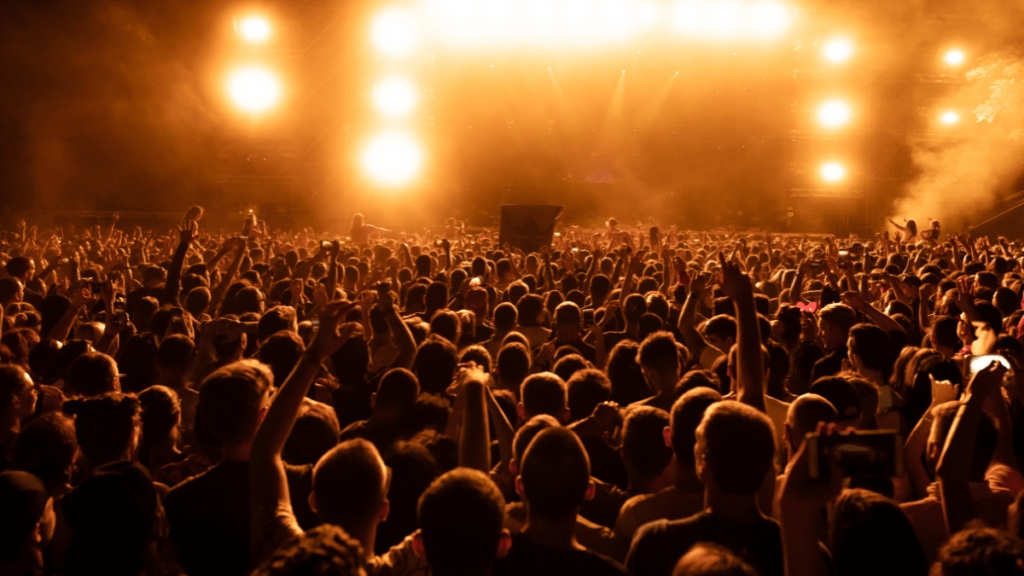Last weekend, 28-year-old Sriram SL, a Delhi-based professional, found himself in the 10,000th position in a massive online queue of 1.3 crore, all competing for tickets to Coldplay Music of the Spheres tour’s Mumbai leg this coming January. The wait would have appeared endless but for the fact that he was able to pick up lounge tickets not just for the Coldplay event but also for India’s annual Lollapalooza music festival, after the ticket selling platform got its act together following a crash within minutes of the sale going live.
Indeed, over the past few years, India has seen a remarkable surge in attendance at music festivals and concerts comprising both international and domestic acts. “The number of large, high-quality concerts and music festivals in India should cross 300 by 2025,” estimates Ashish Pherwani, media & entertainment leader, EY India.
In the absence of a clear measurement matrix, for the moment brands are playing it by the ear. Some activations are pretty straightforward. Coca-Cola, for instance, created “relaxation zones” at the Sunburn Goa music festival; Puma partnered with Ziro Music Festival to promote its eco-friendly products, connecting easily with its environment-conscious audience. United Breweries has partnered with music festivals like Sunburn, Cruise Control and the Arijit Singh Tour, while Simba Brewery has partnered Jazz Weekender, Pravaas and Nigerian sensation Rema.
Some partnerships can get interesting. Take Artemis Hospitals’ Bryan Adams association. “We aim to create a positive experience for attendees while also promoting the importance of preventive healthcare,” says Devlina Chakravarty, MD, Artemis Hospitals.
For upcoming shows such as Lollapalooza, H&M, PVR Inox, Johnny Walker and Budweiser have forged partnerships. The Ziro Festival has partnered with Royal Enfield , Toyota, EastMojo and The British Council. The NH7 Weekender, meanwhile, has onboarded Social, Boom Panda, Impresario and Pheonix Marketcity.
Look at the opportunity waiting for these brands: According to an EY report, the concerts and music events industry stands at 805 crore, and will cross the1,000-crore mark by end-FY25. The company says that music is an integral part of the live events economy, with over 15,000 concerts held every year. About a hundred of these are “major” events, attended by at least 5,000. Put together, the annual big-ticket music and food festivals attract around 1.5 million visitors.
Owen Roncon, chief of business, live events, BookMyShow, says Indian viewers are willing to pay a premium for such experiences. “In 2023, specially curated global events saw a 82% growth in demand compared to the previous year,” he adds.
Fine-tuning strategy
The advertising market for music festivals and concerts in India has grown steadily too, and is estimated at 500 crore currently. On an average, small to mid-sized festivals cost5-10 lakh for sponsorships while large festivals cost `20 lakh to a crore, depending on exclusivity and on-ground branding opportunities. “In this tango between the consumer and the corporate, the arts get a much-needed boost in patronage, resources and support,” says Jay Shah, vice-president, cultural outreach at Mahindra Group, which organises festivals such as Mahindra Blues and Mahindra Kabira.
Anuja Bharadwaj, associate creative director, copy, BC Web Wise, says events like Sunburn and NH7 Weekender rely heavily on sponsorships, which make up almost 70% of the revenue, with ticket sales contributing the rest. For major festivals, advertising and partnerships can generate revenues of `40-50 crore, factoring in ticketing, merchandise, and brand activations.
The real value is measured not just in direct sales, but in increased brand awareness, customer loyalty, and social media engagement. In some cases, brands see immediate ROI through data collection, product sampling, or direct purchases, says Prateek N Kumar, founder and CEO of NeoNiche.
Despite their growing popularity, leveraging music festivals as marketing platforms can be tricky. “Brands face challenges like high costs, ensuring alignment with the festival’s audience, and cutting through the noise of multiple sponsors. Logistical complexities, like brand visibility and seamless integration into the festival experience, can also pose hurdles,” points out Yasin Hamidani, director, Media Care Brand Solutions.
Moreover, planning various promotion strategies is just step one towards brand promotion. Execution at the ground level is another challenge that brands have to deal with, and thus they need to find reliable partners that execute their strategies on ground, says Hariom Seth, founder, Tagglabs.
In the end, a brand needs to find common ground with an event, says Vandana Tandon Khanna, professor at K J Somaiya Institute of Management, because every festival/concert demographic will not correspond with every brand’s target audience.


